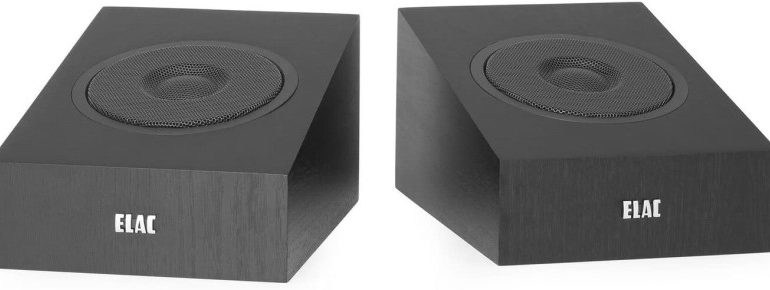Best Placement of Up-Firing Dolby Atmos Enabled Modules
When Dolby introduced Atmos, my first thought was that people would never want to install speakers in their ceilings. I wasn’t wrong. People have repurposed already installed in-ceiling speakers but, for the most part, they aren’t rushing out to install in-ceiling speakers. Manufacturers have noticed this and have come up with angled and other types of speakers that can be mounted on walls and ceilings. Even Dolby knew this would be a problem as they also introduced up-firing Atmos enabled modules. These up-firing Dolby Atmos enabled modules can be placed on top of other speakers. They fire upwards, usually at an angle, to “bounce” the sound off the ceiling. But how do up-firing Dolby Atmos enabled modules really work and what is the best placement?
How Do Up-Firing Dolby Atmos Enabled Modules Work?
Up-firing Dolby Atmos enabled modules are meant to replace in-ceiling speakers. If you look at the Dolby diagrams (below), it is clear that the speakers bounce the sound off the ceiling and back at the listener. There is no denying that this is true. If you aim any speaker at any surface, the sound will bounce off that surface. But, is that how they simulate speakers that should have been physically mounted in the ceiling?
We don’t think so. At least, not completely.
We’ve talked about phase before. Sound designers can alter the phase of a sound so that it tricks our ears (brains really) into thinking a sound is coming from somewhere it is not. It has already been revealed that up-firing Dolby Atmos enabled modules have an HRTF integrated into their design. An HRTF (or Head Related Transfer Function) is essentially modifying the sounds that would have come from overhead speakers. This changes how they sound in an effort to make them sound more like they are placed on the ceiling.
But What About the Bounce?
When an up-firing Dolby Atmos enabled module plays a sound, you hear it twice. Once directly from the speaker, and the second time as the sound bounces off the ceiling. The HRTF is modifying the sound so that your brain will be more convinced that the sound is coming from above. But not all of the sound is. So how does that work?

The easy answer is not very well. If you sit too close to the up-firing Dolby Atmos enabled module, the direct sound will be louder than the bounced sound. You will be more likely to perceive that sound as coming from the speaker and not the bounce. If you sit too far away, the bounced sound will be more delayed and have less energy (volume) and you’ll perceive the sound as direct from the speaker. The HTRF will try and counteract this, but there is no telling how effective it will be.
So, essentially there is a perfect distance from the speaker you should be sitting. Close enough that the reflected sound is loud enough but not too close. What is that distance? We can’t tell you! It has to do with the height of your ceilings, how reflective the ceiling is, and the placement of your up-firing Dolby Atmos enabled modules.
What is the Best Placement of Up-Firing Dolby Atmos Enabled Modules?
Dolby’s own guidelines (LINK to PDF) will tell you that up-firing speakers should be placed at, or above, ear level. In our experience, this is true. We’ve definitely found that placing them below ear level pretty much universally destroys the effect. But it is more than that.
Dolby wants you to place these speakers on top of your front left and right speakers as well as on top of your surround speakers (preferably the surround back speakers). But these speakers are usually at very different distances from your seat. As we’ve stated, the effectiveness of the up-firing Dolby Atmos enabled modules is very dependent on their placement and distance from you.
What this means for you is that you are going to need to experiment. First, they must be above ear level. Most importantly, you should not limit them to being on top of your actual speakers. Yes, that’s not how Dolby shows them in their diagrams, but it may help if you aren’t getting a convincing overhead effect. Try them in different locations (as long as they are above ear level) to see if the combination of the bounce and the HRTF works better. The benefit of the up-firing Dolby Enabled modules (versus the speakers with built-in up-firing speakers) is that you can vary their placement. Use that. You can even elevate them more.
The Wrap Up
We wish we could give you a physical distance or location to place your up-firing modules. Unfortunately, there are too many variables that can affect their performance. Instead, we want to assure you that, regardless of Dolby’s terrible diagrams, you can and should place your modules where they’d work best. And trial and error is likely the only way you’ll find that location.


